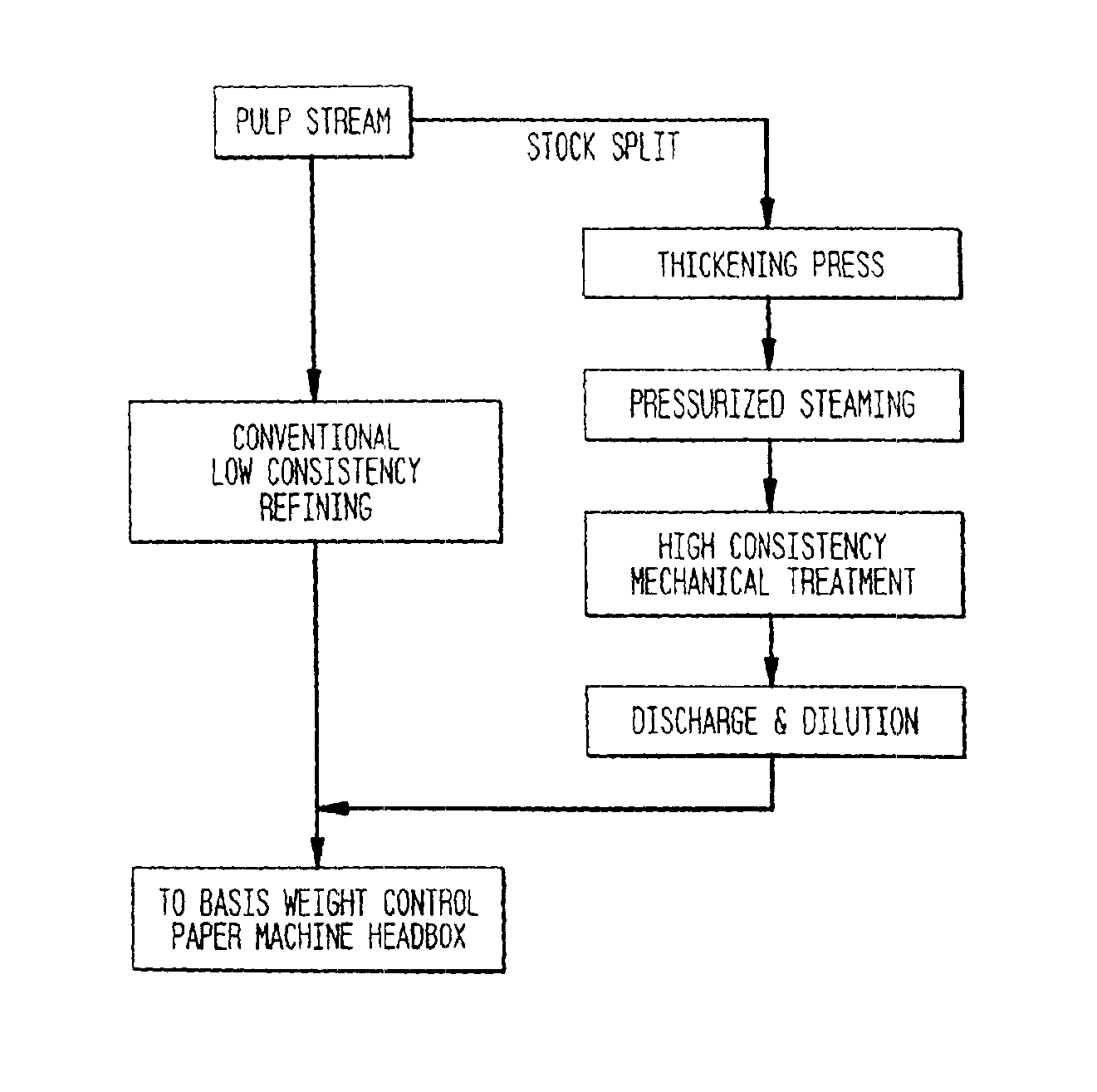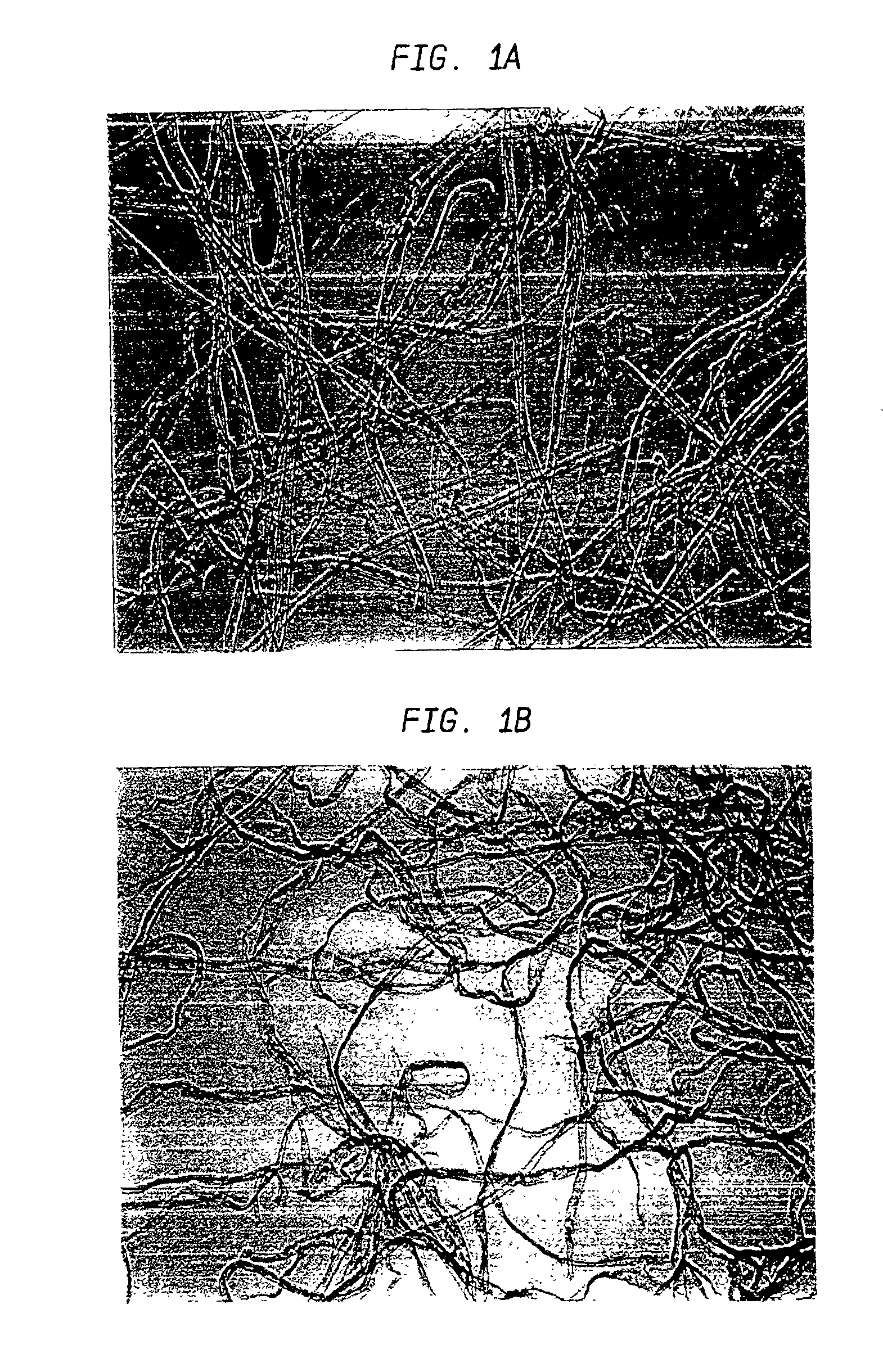Method of providing papermaking fibers with durable curl
a technology of durable curl and fiber, applied in the field of papermaking fiber, can solve the problems of loss of most of the curl in both high quality or high strength papermaking, burnt under the friction of inter fiber, and the loss of the curl in high consistency refined mechanical and high yield sulfite pulp, etc., to achieve the effect of high consistency, durable curl index, and high consistency
- Summary
- Abstract
- Description
- Claims
- Application Information
AI Technical Summary
Benefits of technology
Problems solved by technology
Method used
Image
Examples
examples
[0140]The process for introducing durable curl into papermaking fibers was evaluated under a variety of conditions. Significant advantages of the invention include:[0141]Resilience—The curl is not substantially removed by various curl-removing pulp treatments.[0142]Sheet permeability—Fiber curl increased throughdried (“TAD”) handsheet permeability by 70% at 15″ (H2O) ΔP.[0143]Product benefits—Fiber curl increased creped tissue bulk and porofil by up to 30%.[0144]Robust, controllable process—Significant curl was produced over a wide range of throughput and disk gap. The magnitude of the induced curl increased with increased treatment pressure / temperature.[0145]Low specific energy—Significant curl was induced over a wide range of process conditions using less than 1 to 2 HP day / ton specific energy input without a significant freeness drop.[0146]Scale-up—commercial soale continuous processing (20″ refiner) produced a higher degree of curl than lab scale batch processing (12″ refiner) u...
examples 83-90
[0175]Approximately 100 lb of finished pulp was transported at about 5% consistency and thickened to 35% consistency. These runs were exploratory in nature and dealt primarily with developing operating parameters for the unit. It was noted that significant curl was imparted to the fiber during very low power application bleaching. A large plate gap was used to minimize refining. This work was performed with a hydrogen peroxide based bleaching liquor.
examples 91-107
[0176]A sample of paper was acquired for the next set of tests. The paper was wetted to 35% consistency and run through a lab pilot pulp breaker before use in the refiner. Runs 91 to 102 and the production runs of Examples 103-107 were performed with this sample. During these runs it was discovered that the measured curl in the fiber was related to the bleaching performance in the refiner. Again, these runs were performed with a large gap and a low power application in the refiner. The positive impact of bleaching in the refiner on curl was carried through subsequent hydrosulfite bleaching and a variety of retention conditions. The examples demonstrated that a significant amount of the curl was preserved through the storage and repulping / paper making process. This curl generated a tissue sheet of increased caliper and Porofil while reducing the tensile strength.
PUM
| Property | Measurement | Unit |
|---|---|---|
| temperature | aaaaa | aaaaa |
| temperature | aaaaa | aaaaa |
| pressure | aaaaa | aaaaa |
Abstract
Description
Claims
Application Information
 Login to View More
Login to View More - R&D
- Intellectual Property
- Life Sciences
- Materials
- Tech Scout
- Unparalleled Data Quality
- Higher Quality Content
- 60% Fewer Hallucinations
Browse by: Latest US Patents, China's latest patents, Technical Efficacy Thesaurus, Application Domain, Technology Topic, Popular Technical Reports.
© 2025 PatSnap. All rights reserved.Legal|Privacy policy|Modern Slavery Act Transparency Statement|Sitemap|About US| Contact US: help@patsnap.com



